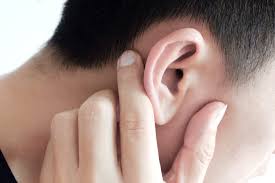If you’re suffering from facial discomfort, understanding foods to avoid if you have facial pain is essential for managing symptoms and preventing flare-ups. Certain foods can trigger inflammation, strain Facial Pain Treatment muscles, or irritate sensitive nerves, especially in conditions like temporomandibular joint disorder (TMJ), trigeminal neuralgia, or chronic sinus issues. Adjusting your diet can significantly reduce pain episodes and promote long-term relief.
Hard and Chewy Foods That Strain the Jaw:
One of the most important food categories to avoid if you have facial pain includes those that require intense chewing or put excessive pressure on the jaw joint. These foods can worsen muscle tension and contribute to joint inflammation. Avoid:
Nuts and seeds, especially almonds, walnuts, and sunflower seeds
Hard candies or toffees that require prolonged chewing
Raw vegetables, like carrots or celery sticks, unless cooked soft
Chewy meats, including steak, jerky, or tough cuts of pork
Bagels and hard crusted bread that require strong jaw movement
Switching to softer foods and cutting items into smaller pieces can reduce muscle strain and ease pain during meals.
Inflammatory Foods That Worsen Nerve Sensitivity:
When considering foods to avoid if you have facial pain, it’s crucial to limit pro-inflammatory ingredients. Inflammation can intensify nerve sensitivity and prolong healing time in painful conditions. Common culprits include:
Processed and fried foods, such as chips, fries, and frozen dinners
Sugar-rich items, like soda, pastries, and candy
Refined carbohydrates, including white bread and pasta
Dairy products in sensitive individuals, especially full-fat cheese and ice cream
Red meats and processed meats, which promote systemic inflammation
Replacing these with anti-inflammatory options like leafy greens, berries, and omega-3-rich foods may help reduce facial pain flare-ups over time.
Acidic and Spicy Foods That Trigger Facial Nerve Pain:
In individuals with nerve-related facial pain, acidic or spicy foods can irritate already sensitive nerve endings, especially in cases of trigeminal neuralgia or post-dental trauma. Be mindful of these triggers:
Citrus fruits and juices, like oranges, lemons, and grapefruit
Tomato-based sauces and ketchup, which are both acidic and processed
Hot spices, including chili powder, cayenne pepper, and jalapeños
Vinegar-heavy dressings or pickled foods
Carbonated beverages, which increase acid and mouth sensitivity
Mild seasoning and pH-neutral foods may be better tolerated and more comforting to sensitive facial nerves.
Cold and Frozen Foods That Aggravate Sensitive Teeth:
If your facial pain stems from dental issues, such as cracked teeth, cavities, or gum infections, you’ll want to avoid overly cold foods. These can trigger sharp, sudden pain and aggravate already exposed nerve endings. Limit or eliminate:
Ice cream and frozen yogurt
Ice-cold smoothies or drinks
Frozen fruits, like blueberries or grapes eaten directly from the freezer
Crushed ice or ice cubes, often chewed unintentionally
Cold metal utensils, which may cause discomfort in sensitive areas
Opting for room temperature or slightly warm foods and beverages can help prevent unnecessary pain episodes.
Caffeinated and Alcoholic Beverages That Dehydrate:
Hydration plays a vital role in muscle and nerve health. Excess caffeine or alcohol can cause dehydration, muscle tightness, and increased nerve excitability. If you’re exploring foods to avoid if you have facial pain, consider limiting:
Coffee and strong black teas, especially in large amounts
Energy drinks, which are both sugary and loaded with caffeine
Alcoholic beverages, which can disrupt nerve signaling and hydration balance
Flavored water with caffeine additives
Cocktails with citrus or spicy mixers, which combine multiple triggers
Drinking more water and herbal teas can help maintain hydration, ease muscle function, and support pain control.
Developing a Facial-Pain-Friendly Diet Plan:
Managing facial pain naturally through diet doesn’t mean eating bland or boring meals. Instead, create a nourishing, pain-conscious meal plan that avoids aggravating foods and supports healing. Focus on:
Cooked vegetables like spinach, zucchini, and sweet potatoes
Soft proteins, such as scrambled eggs, tofu, and well-cooked fish
Whole grains like oatmeal, brown rice, and quinoa
Healthy fats, including avocados, olive oil, and flaxseeds
Herbs like turmeric and ginger, known for their anti-inflammatory effects
Combining thoughtful food choices with professional care—whether dental, neurological, or physical therapy—can significantly reduce facial pain and improve overall well-being.


 :
: